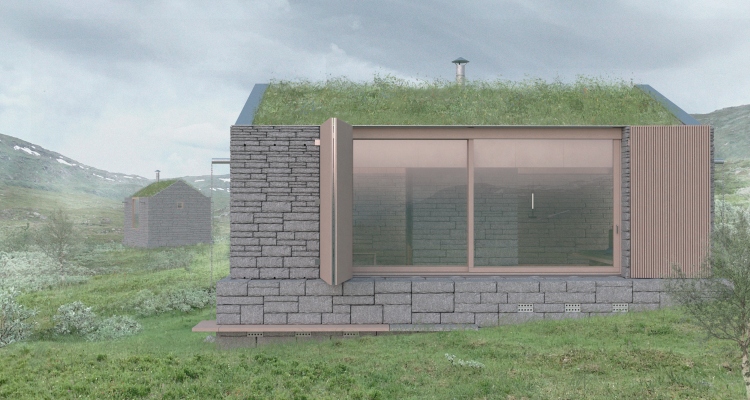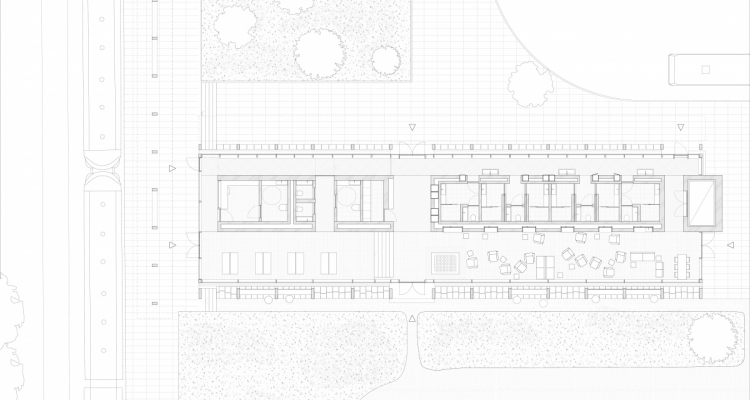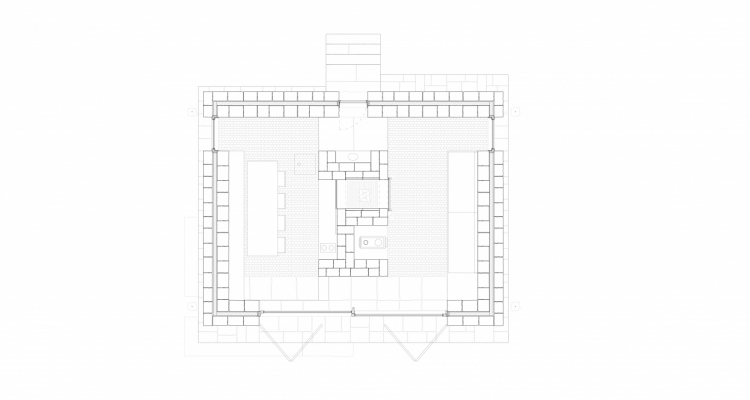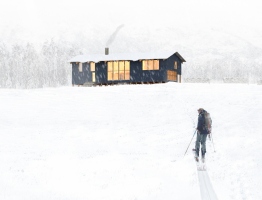Diplomprosjekt
Høst 2021
Institutt for arkitektur
The Norwegian national identity is to be found in the countryside. Here, a cultural uniqueness had remained during the 400 year long union with Denmark. The mode of life in the countryside and aesthetic of untouched nature became symbols of the Nor-wegian national soul. Derived from this fascination of nature, friluftsliv became a deeply ingrained part of Norwegian culture. Friluftsliv can be roughly translated into “out-doors life”, and entails spending time in, hiking, and experiencing nature. The term is said to originate from the poem “Paa vidderne” (On the Heights) by Henrik Ibsen
I den øde Sæterstue
Al min rige Fangst jeg sanker;
Der er Krak og der er Grue,
Friluftsliv for mine Tanker.
- Henrik Ibsen
In our Pre-Diploma, we devised a strategy which applied Nordlandsbanen as a means of transportation for inland tourism. Nordlandsbanen is a 726 km long train ride, going from Trondheim in the south, to Bodø in the North. In connection to the stations, there are several hiking trails which lead into the highlands.
We limited our focus to an area in and around Saltdalen - Svartisen National Park. Here, where we found the most extensive and intricate network of connections between hiking trails and train stops. However the network does have several missing pieces, which, if realised, would make hiking to and from the train stops more accessible. Based on a set of criterias, we found three sites where new projects could be built to further develop the network. The three sites are placed in different stages of travel. Site A is at a train stop, site B is on the border to the national park, and site C lies within the national park.
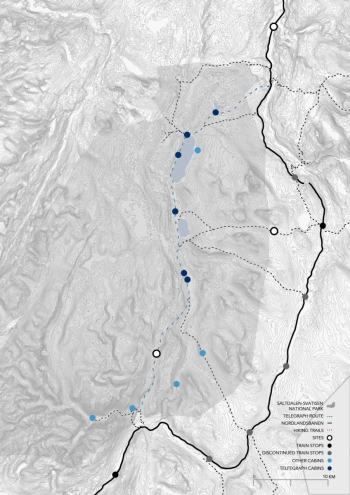
One of the hiking trails in the national park is the historic trail, Telegrafruta. The trail originates from a telegraph line which was built during the 1860s. The harsh climate of the mountains required much maintenance, and several cabins were built for the workers to live in while working on the line. These cabins, together with remains of thousands of telegraph posts, make up the historic hiking trail.
The first buildings to be erected in connection to Telegrafruta were two primitive stone cabins that were to provide shelter for the workers who worked on building the telegraph posts. They were built with stone found on site, and have a traditional dry stone dou-ble stacked wall construction.
Our ambition is for the three projects to relate to each other and to the existing structures of the network, thus creating an identity for the network as a whole. For this reason, we have chosen stone as the constructive material for our projects. By adopting this specific feature the new projects would connect the historic route with the remaining hiking trails and the train route.
The program varies from the different sites. At site A there will be a train station and sleeping accomodations for 20 people. The sleeping accommodation will have small private rooms and a large en-trance to store luggage.
The two sites in the highlands have a similar program based on the same needs. None of the sites have water or electricity installed and will need proximity to running water. At site B we will build two small identical shelters. Site C will have the same program, but divided into two small sleeping annexes and one shared space build-ing.. There is a stove for effective heating, and an open fireplace to create light as well as heat. A small outhouse includes the toilet and storage space.
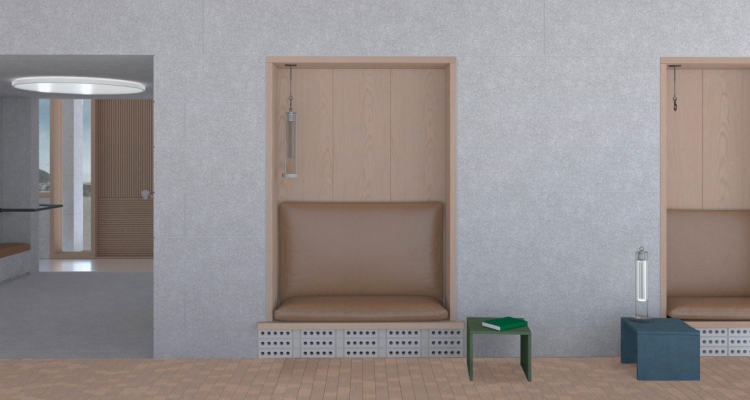

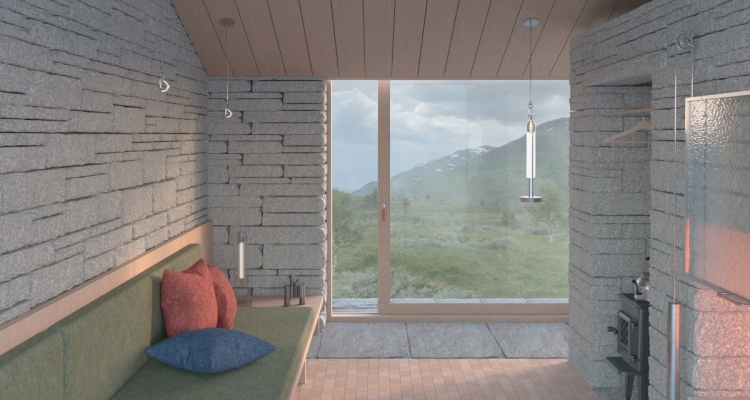
Considering the different nature of the programs, the sites, and the logistics of building with stone, the projects do not have a similar architecture. In the highlands one cannot use large machines for heavy lifting, which means that the stone elements cannot become too large for people to lift, while on site A it is possible for the construction to consist of larger stone elements. The construction materials for Site B and C have to be brought in by helicopter or snow mobiles.
To build in stone has been challenging as people in the professional environment of architecture have limited knowledge of stone as a construction material. Some of the difficulties lie in the unpredictability of the material in regards to cracks and hidden weaknesses in the material. With this in mind, we have chosen a traditional construction method for the shelters. The method is based on a dry stacking of stones, which means that there is no mortar used. To achieve a level of comfort in the shelters we have modified this traditional dry stacking and added insulation and wind barriers. This led to several challenges in regards to the sta-bility of the wall. To solve these problems we designed a set of innovative solutions after discussing them with Engineer and Stone Mason Espen Marthinsen.
At the train station the construction consists of stone columns and a stone core. The columns are unconventional in that they are more slender than ordinary stone columns. This is made possible by threading a steel rod through several stones and then ten-sioning the rod by tightening nuts on each end, which results in a post-tensioned stone column.
Our project is an example of how one could develop the existing network of infrastructure already found at, or close to, a train station and a national park. As Nordlandsbanen is more than 700 km long and there are 16 national parks in Trøndelag and Nordland, we imagine that the idea of developing similar infrastructure can be applied to other places along the trails. We believe that to upgrade and further facilitate the existing infrastructure to meet the desired increase in visitors of the national parks is less damaging for the preservation areas than to just leave it be. Today’s development in Norway of large areas with cabins is one of the larger threats towards nature and species diversity. Cabins are often built and equipped as a house, with water, electricity, and highly technological solutions. Our shelters are antidotal to this development. They are a nod to simpler times and democra-tise nature by facilitating for a larger number of people to experience nature.
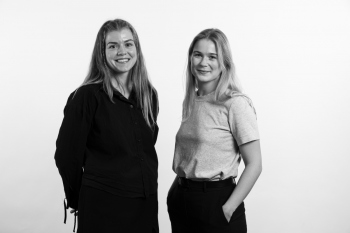
Runa Haanæs / runahaanas@gmail.com
Andrea Nymoen / andrea.vn95@gmail.com
I den øde Sæterstue
Al min rige Fangst jeg sanker;
Der er Krak og der er Grue,
Friluftsliv for mine Tanker.
- Henrik Ibsen
In our Pre-Diploma, we devised a strategy which applied Nordlandsbanen as a means of transportation for inland tourism. Nordlandsbanen is a 726 km long train ride, going from Trondheim in the south, to Bodø in the North. In connection to the stations, there are several hiking trails which lead into the highlands.
We limited our focus to an area in and around Saltdalen - Svartisen National Park. Here, where we found the most extensive and intricate network of connections between hiking trails and train stops. However the network does have several missing pieces, which, if realised, would make hiking to and from the train stops more accessible. Based on a set of criterias, we found three sites where new projects could be built to further develop the network. The three sites are placed in different stages of travel. Site A is at a train stop, site B is on the border to the national park, and site C lies within the national park.

One of the hiking trails in the national park is the historic trail, Telegrafruta. The trail originates from a telegraph line which was built during the 1860s. The harsh climate of the mountains required much maintenance, and several cabins were built for the workers to live in while working on the line. These cabins, together with remains of thousands of telegraph posts, make up the historic hiking trail.
The first buildings to be erected in connection to Telegrafruta were two primitive stone cabins that were to provide shelter for the workers who worked on building the telegraph posts. They were built with stone found on site, and have a traditional dry stone dou-ble stacked wall construction.
Our ambition is for the three projects to relate to each other and to the existing structures of the network, thus creating an identity for the network as a whole. For this reason, we have chosen stone as the constructive material for our projects. By adopting this specific feature the new projects would connect the historic route with the remaining hiking trails and the train route.
The program varies from the different sites. At site A there will be a train station and sleeping accomodations for 20 people. The sleeping accommodation will have small private rooms and a large en-trance to store luggage.
The two sites in the highlands have a similar program based on the same needs. None of the sites have water or electricity installed and will need proximity to running water. At site B we will build two small identical shelters. Site C will have the same program, but divided into two small sleeping annexes and one shared space build-ing.. There is a stove for effective heating, and an open fireplace to create light as well as heat. A small outhouse includes the toilet and storage space.



Considering the different nature of the programs, the sites, and the logistics of building with stone, the projects do not have a similar architecture. In the highlands one cannot use large machines for heavy lifting, which means that the stone elements cannot become too large for people to lift, while on site A it is possible for the construction to consist of larger stone elements. The construction materials for Site B and C have to be brought in by helicopter or snow mobiles.
To build in stone has been challenging as people in the professional environment of architecture have limited knowledge of stone as a construction material. Some of the difficulties lie in the unpredictability of the material in regards to cracks and hidden weaknesses in the material. With this in mind, we have chosen a traditional construction method for the shelters. The method is based on a dry stacking of stones, which means that there is no mortar used. To achieve a level of comfort in the shelters we have modified this traditional dry stacking and added insulation and wind barriers. This led to several challenges in regards to the sta-bility of the wall. To solve these problems we designed a set of innovative solutions after discussing them with Engineer and Stone Mason Espen Marthinsen.
At the train station the construction consists of stone columns and a stone core. The columns are unconventional in that they are more slender than ordinary stone columns. This is made possible by threading a steel rod through several stones and then ten-sioning the rod by tightening nuts on each end, which results in a post-tensioned stone column.
Our project is an example of how one could develop the existing network of infrastructure already found at, or close to, a train station and a national park. As Nordlandsbanen is more than 700 km long and there are 16 national parks in Trøndelag and Nordland, we imagine that the idea of developing similar infrastructure can be applied to other places along the trails. We believe that to upgrade and further facilitate the existing infrastructure to meet the desired increase in visitors of the national parks is less damaging for the preservation areas than to just leave it be. Today’s development in Norway of large areas with cabins is one of the larger threats towards nature and species diversity. Cabins are often built and equipped as a house, with water, electricity, and highly technological solutions. Our shelters are antidotal to this development. They are a nod to simpler times and democra-tise nature by facilitating for a larger number of people to experience nature.

Runa Haanæs / runahaanas@gmail.com
Andrea Nymoen / andrea.vn95@gmail.com
